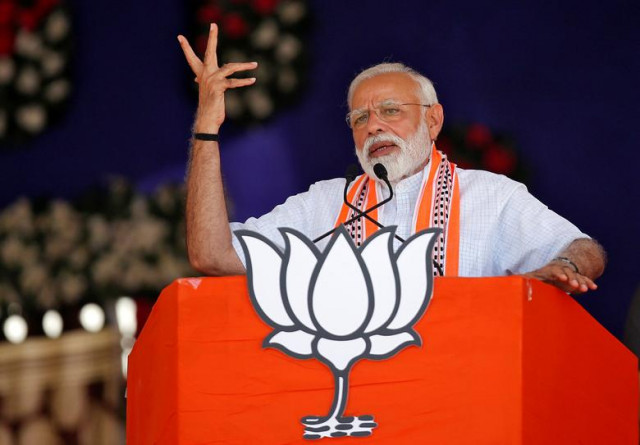Economic woes: Consumer demand, private investment weakens in India
Band aid kind of solutions are not going to help the economy, says expert

Indian Premier Narendra Modi. PHOTO: REUTERS
The median figure from the poll of economists is for annual growth in the gross domestic product of 5.7 per cent in the quarter, compared with 5.8 per cent in the previous three months and 8 per cent for the same period of 2018.
If the latest number for expansion of gross domestic product is 5.7 per cent or less, the quarter had the slowest expansion in 21 quarters, since 5.3 per cent in January-March 2014.
“Economic growth is collapsing,” said Sunil Sinha, principal economist at India Ratings, the Indian arm of Fitch, noting that April-June likely was the fifth straight quarter of slowing since 8.1 per cent in the first three months of 2018. He said the slowdown has been driven by a fall in household savings and banks’ increased bad loans, which has hit private investment.
“India’s economic slowdown could continue for next 2-3 years as the economy faces serious structural issues of a slowdown in consumer demand and decline in manufacturing growth,” Sinha said.
Prime Minister Narendra Modi’s government is taking steps to try to attract investment to combat the slowdown.
On Wednesday, he approved 100 per cent foreign investment in coal mining and eased rules for sectors including contract manufacturing and single-brand retail.
Finance Minister Nirmala Sithraman is likely to announce more measures soon to support sectors such as auto - where July sales tumbled 31 per cent, the biggest decline in nearly two decades - and real estate.
Limited space for stimulus
But in spite of a windfall dividend to the government of nearly $21 billion from the central bank, the room for aggressive stimulus is limited due to slower growth in tax receipts, analysts say.
India could consider a “modest stimulus” for some sectors after the Reserve Bank of India’s hefty dividend while following fiscal discipline, said a senior government official, who declined to be named.
During April-June, the government’s capital spending fell 28 per cent from a year earlier to 630 billion rupees ($8.81 billion), partly due to restrictions on announcing new projects during the election campaign that took place in the part of that period.
Industry chambers are lobbying for a cut in goods and services tax rate on passenger vehicles and cement to revive growth, warning that falling sales could force more job cuts.
The unemployment rate rose to 7.51 per cent in July from 5.66 per cent a year earlier, estimates the Centre for Monitoring Indian Economy, a private think tank in Mumbai.
New Delhi is banking on continued support from the central bank, which this year has cut the benchmark repo rate by 110 basis points while indicating it will further cut rates as inflation remains below its 4 per cent medium-term target of 4 per cent.
The RBI’s monetary policy committee (MPC) next meets October 1-4.
However, analysts said one reason monetary stimulus will not be sufficient to revive growth is that debt-ridden banks are reluctant to pass on benefits, and largely using the space given by rate cuts to protect their loan margins.
“Band-aid kind of solutions are not going to help the economy. We should be prepared for growing below our potential of near 8 per cent growth for next two-three years,” said Sinha of India Ratings.


















COMMENTS
Comments are moderated and generally will be posted if they are on-topic and not abusive.
For more information, please see our Comments FAQ